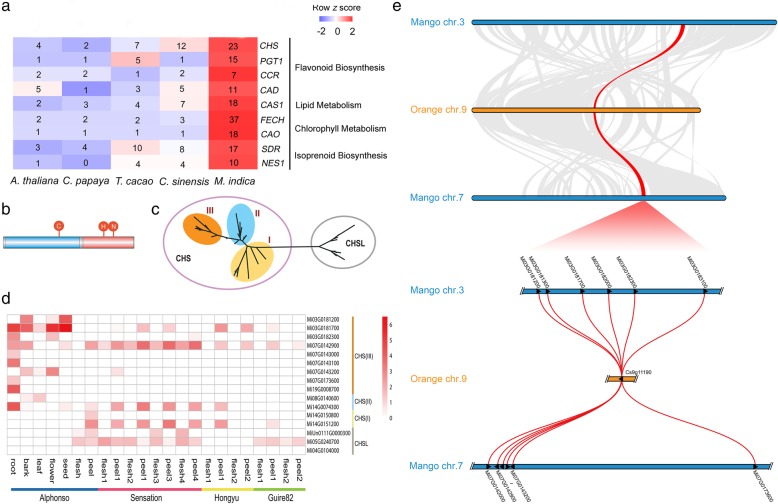Fig. 3.
Expansion of genes in metabolism of flavonoids, lipids, chlorophylls and terpenoids. (a) Gene family analysis showing expansion of genes in flavonoid biosynthesis, lipid metabolism, chlorophyll metabolism and isoprenoid biosynthesis, including CHS family. Numbers showing in cells represent genes counting of each family in each species. (b) Gene structure of a typical CHS peptide (here shows mango gene Mi07g07250). The blue and red blocks represent two conserved domains PF00195.15 and PF02797.11, respectively, and the red circles suggest three conserved residues, Cysteine, Histidine and Asparagine, respectively, within the sequence. (c) Topology of phylogenetic tree of genes containing conserved domains PF00195.15 and PF02797.11 from mango, sweet orange and Arabidopsis. CHS-encoding genes are classified in a distinctive class, here named CHS. (d) The expression pattern of CHS genes in mango cultivars. Unexpressed genes were not showed in this figure. (e) Macrosynteny and microsynteny among mango chr.3, orange chr. 9 and mango chr. 7. Top: macrosynteny patterns among mango chr.3, orange chr. 9 and mango chr. 7. Co-synteny regions are linked with grey belts, except synteny of the regions harboring CHS genes, which are highlighted with a red belt. Bottom: microsynteny of the regions harboring CHS genes among the three chr. The CHS genes are represented by triangles, and are linked with red lines

